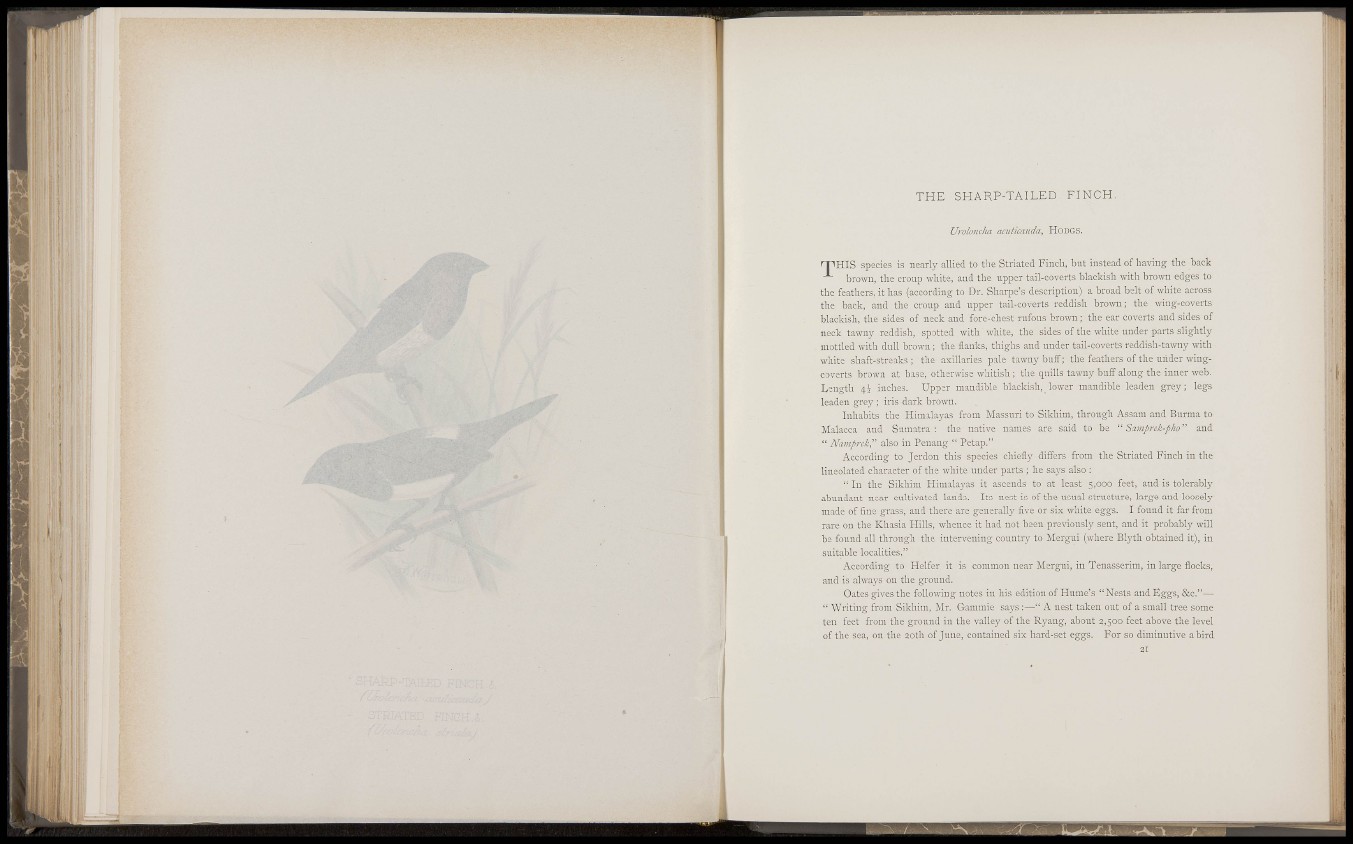
T H E SHARP-TAILED FINCH.
Uroloncha aciiticanda, HODGS.
^ H I S species is nearly allied to the Striated Fiiicli, but instead of having the back
brown, the croup white, and the upper tail-coverts blackish with brown edges to
the feathers, it has (according to Dr. Sharpe's description) a broad belt of white across
the back, and the croup and upper tail-coverts reddish brown; the wing-coverts
blackish, the sides of neck and fore-chest rufous brown; the ear coverts and sides of
neck tawuy reddish, spDtted with white, the sides of the white under parts slightly
mottled with dull brown ; the flanks, thighs and under tail-coverts reddish-tawuy with
white shaft-streaks ; the axillaries pale tawny buff; the feathers of the under wingcoverts
brown at base, otherwise whitish ; the quills tawny buff along the inner web.
Length inches. Upper mandible blackish, lower mandible leaden grey; legs
leaden grey ; iris dark brown.
Inhabits the Himalayas from Massuri to Sikhini, through Assam and Burma to
Malacca and Sumatra: the native names are said to be " Samprek-pho" and
" Namprek," also in Penang " Petap."
According to Jerdon this species chiefly differs from the Striated Finch in the
lineolated character of the white under parts ; he says also ;
" I n the Sikhim Himalayas it ascends to at least 5,000 feet, and is tolerably
abundant near cultivated lands. Its nest is of the usual structure, large and loosely
made of fine grass, and there are generally flve or six white eggs. I found it far from
rare on the Khasia Hills, whence it had not been previously sent, and it probably will
be found all through the intervening country to Mergui (where Blyth obtained it), in
suitable localities."
According to Heifer it is common near Mergui, in Tenasserim, in large flocks,
and is alwa3'S on the ground.
Oates gives the following notes in his edition of Hume's "Nests and Eggs , &c."—
" Writing from Sikhim, Mr. Gammie says :—" K nest taken out of a small tree some
ten feet from the ground in the valley of the Ryang, about 2,500 feet above the level
of tlie sea, on the 20th of June, contained six hard-set eggs. For so diminutive a bird
21
JT